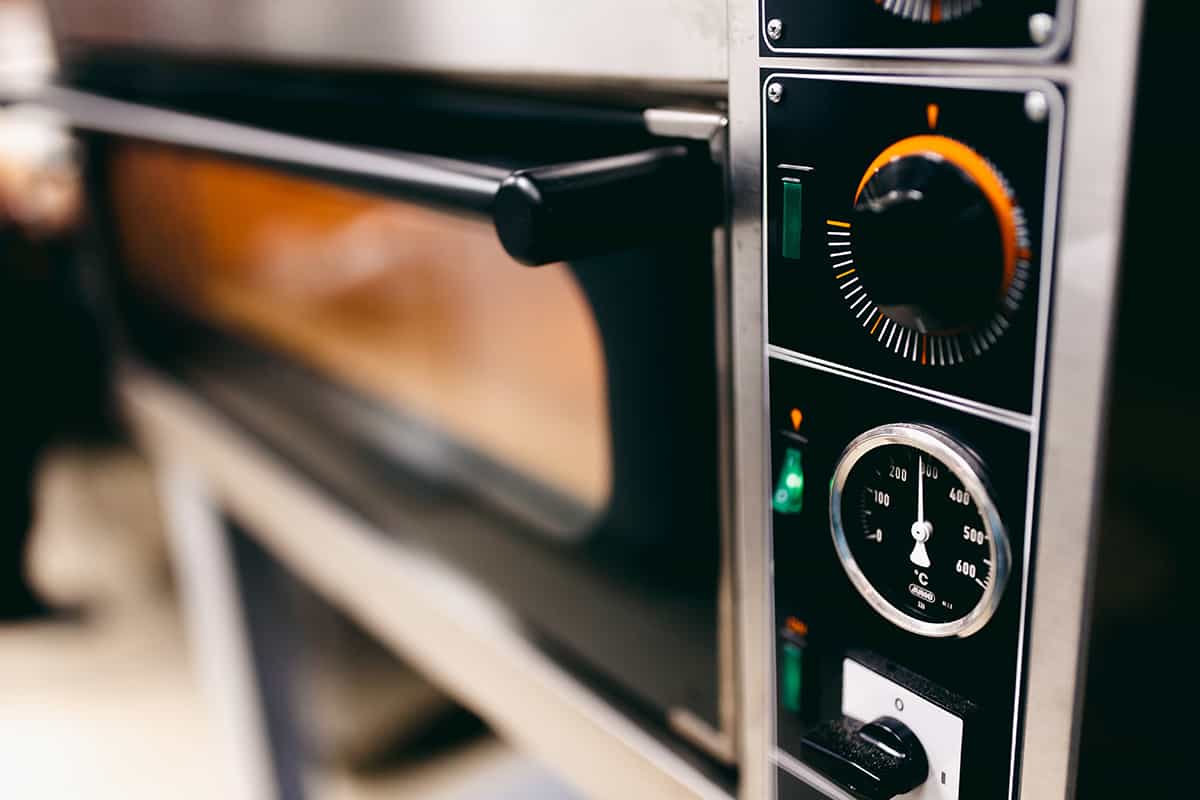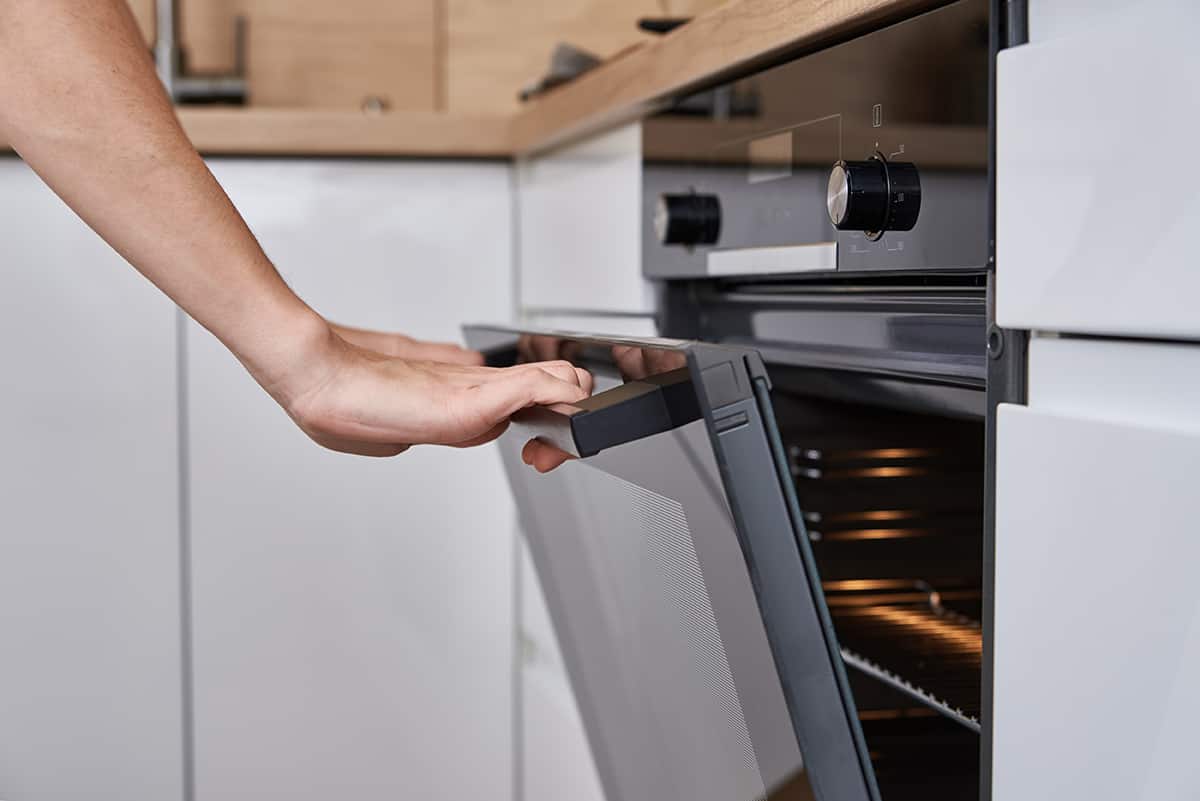The way ovens are designed has changed over the years, so when people are getting a new kitchen installed one of the common questions that crop up is regarding oven venting. In older ovens, it was not unusual for the oven to be vented from the back and ducted out of the home so that fumes and smells were released outside.
Another common feature of older ovens is an oven fan positioned over the top of an oven, which draws fumes in and carries them outside. However, most modern ovens are constructed with only vents on the front of the appliance. Here we explore various issues surrounding vents on ovens.
Do New Ovens Have Vents?

Most types of new ovens you can buy today have vents. Vents are an extremely important feature of an oven because without these the fumes and heat which is created inside the oven cavity have nowhere to go. Older styles of ovens would have vents that you couldn’t necessarily see. These were at the back of the appliance and were attached to ductwork in the home which would carry the oven fumes outside, to the exterior or the property, where they would be dispersed into the air.
This worked well because it allowed the air to escape the oven and prevent overheating, and it also meant the smells and fumes were sent outside rather than into the home. However, a key drawback to this style of oven is that it makes it a lot more hassle to install. Some older ovens would also come with an eyebrow fan, which was a small extractor fan over the top of the oven. This would circulate to draw air in and carry it outside, helping to remove any fumes or smells which had come out of the oven when the oven door was opened.
It’s very unusual to find ovens these days which have extractor fans or vents built over the top of them, however, if you’re conscious of cooking smells being distributed throughout your home, you could turn on a nearby extractor fan to help capture the odors.
Where are the Vents on an Oven?
On modern ovens, the vents are usually situated on the front of the appliance, typically above the handle, or below the oven door. The vents are there to allow air to escape out of the oven, so that it doesn’t overheat, and to help it cool down after use.
Do Oven Vents Release Smells?
Oven vents allow hot air to escape from inside the oven, and the hot air can also carry grease, fumes, and smells with it. This can mean that smells are allowed to enter the home, however, without these vents, the oven is at risk of overheating and potentially causing a fire. Most people would prefer to put up with some minor smells than experience a kitchen fire.
If the cooking smells are causing an issue for you, you can open a window in the kitchen while cooking, or turn on the extractor fan that most people have positioned over their cooktop or hob. While the vents in an oven can be responsible for releasing smells into the kitchen, this is an unavoidable consequence of cooking.
Even if the vents did not release smells into the home, you would still get the smells penetrating your home when you open the oven door to get your food out. Some oven models come with filters on their vents which help to capture odors, therefore allowing air to pass through but limiting cooking smells.
This might be a good option if the oven smells bother you, especially if you live in an open-plan layout and can’t escape the cooking fumes. However, remember that when you open your oven door, the smells will still escape.
Are Ovens Without Vents Safe?

Ovens have to have vents to reduce the likelihood of overheating, which could lead to a fire igniting. The vents are essential to the safe running of the oven, and you shouldn’t attempt to block them up or prevent them from working.
Oven vents should be kept open and cleaned regularly so that the air can circulate as it’s meant to. The fans also help the oven to cool down more quickly after it has been turned off, and they can even be useful in warming up a cool kitchen to kill two birds with one stone.
How to Clean Oven Vents
If you have a newer style oven with vents on the front of the appliance, then these will be easy to clean yourself. Wrap a butter knife in a kitchen towel and then run it along the length of the vents to disturb trapped dirt. You can then spray a kitchen cleaner onto the towel to moisten it, and repeat the action to help remove the build-up of grease in the vents.
If you have an older-style oven with venting at the back of the appliance, then you may need to seek professional help to get these vents cleaned because they aren’t easily accessible without removing the oven from its fixed spot.
Do Ovens Need Extractor Fans?
Most kitchens have extractor fans built over the top of a cooktop or hob where the burners are situated. This is because the grease splatter, smells and fumes from pans cooking on the burners are directed upwards, where they can be caught by the extractor fan. The fan will serve to remove smells and fumes from the kitchen to give a more pleasant cooking experience.
Ovens do not need to have extractor fans, but you can install one over the top of your wall oven if you find that the smells and fumes the oven is producing are particularly bothersome. The extractor fan you already have in your oven can be used to help remove any smells or fumes caused by an oven, especially if you have a range oven which means the extractor fan will be positioned over the top of where the oven is.
If you have a wall oven that is some distance away from the extractor fan, then it may not be quite as useful at eliminating smells and fumes, but it is still worth turning it on while cooking because it will help a little. If you find that the smells and fumes coming from your oven during cooking are very unpleasant, then opening a kitchen window is going to be your best line of defense.
This is usually most helpful on spring or fall days, when the temperature isn’t too low, and there is a gentle breeze in the air to help disperse the cooking smells. If the winters are very cold in your local climate, then opening a window during this time of year might not be a suitable solution. You can install a small fan over the top of a wall oven if you feel it will be beneficial to you, though this will need to be factored into the new kitchen design.
An eyebrow fan may work best because these won’t take up too much room, and will protrude slightly over the top of the oven to catch any fumes which are passing upwards.






